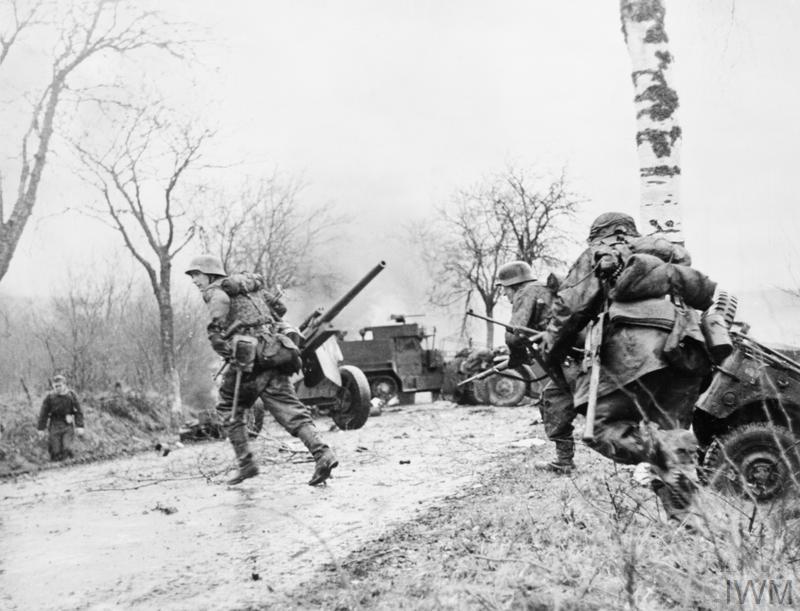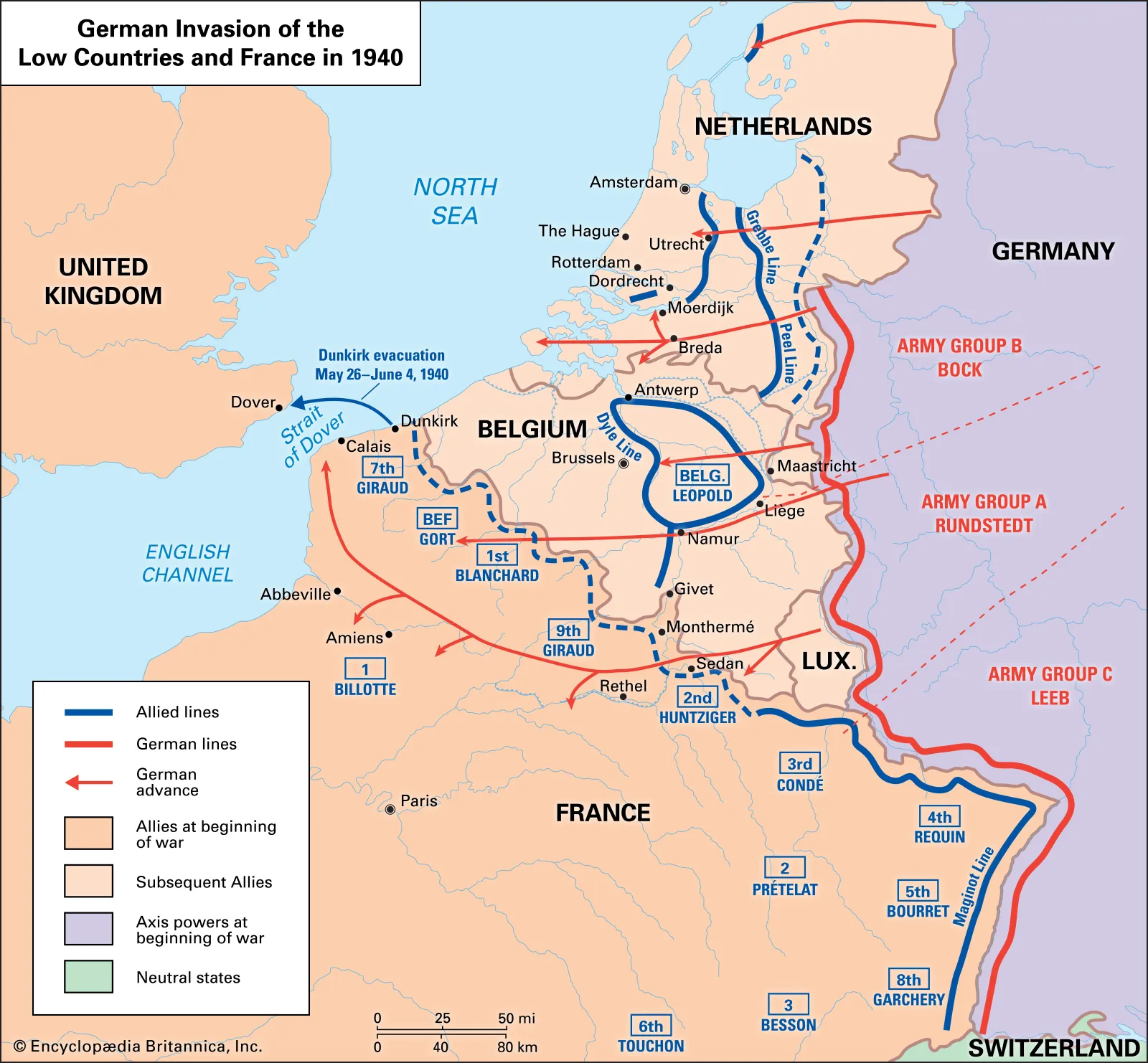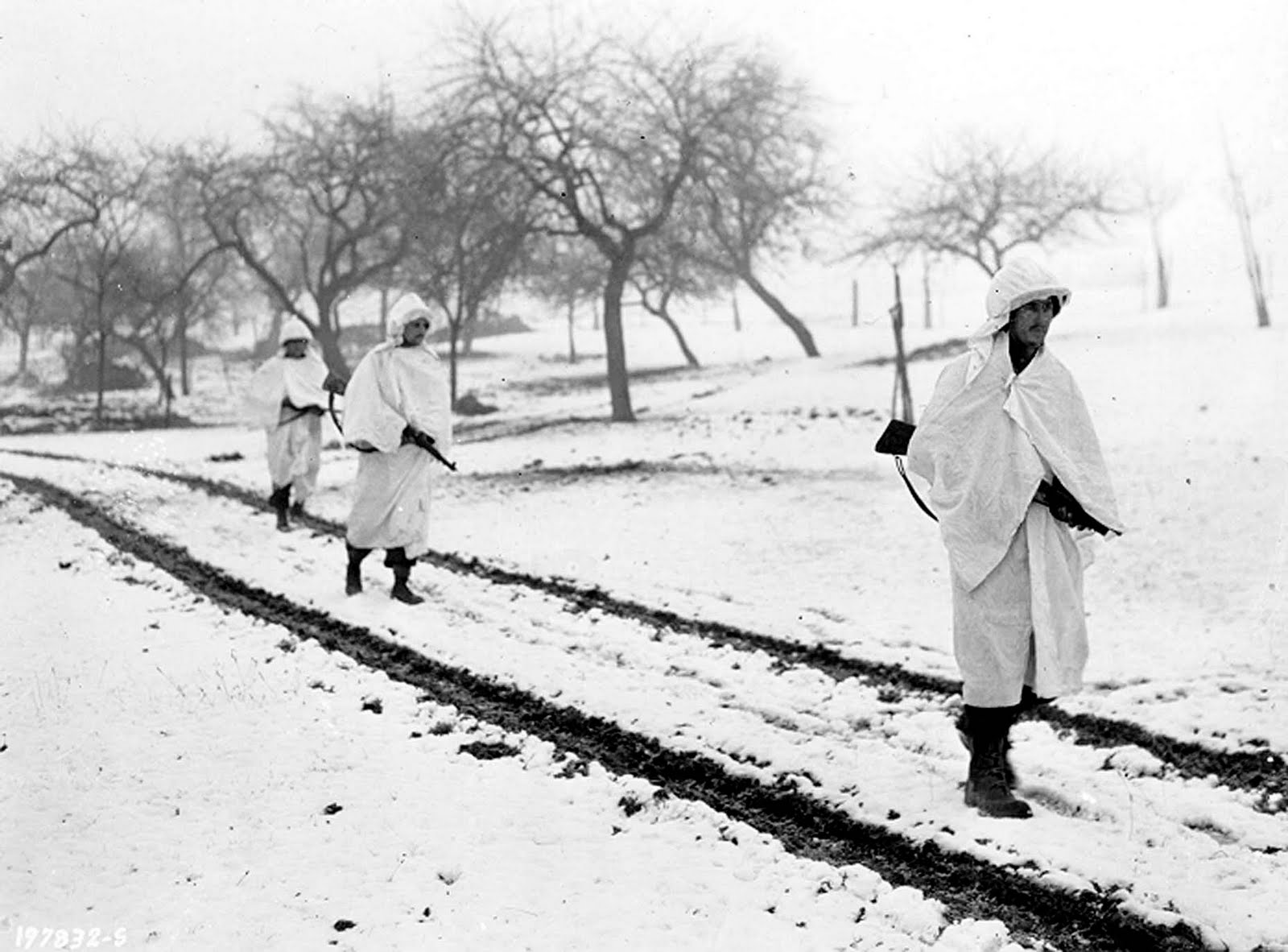Intelligence Failures: How the Allies Missed the Signs
The Battle of the Bulge (December 1944 – January 1945) stands as a prime example of intelligence failure in military history. In the weeks before Hitler's surprise Ardennes offensive, the Allied high command overlooked or misinterpreted numerous warning signs. Despite commanding vast intelligence resources – from ULTRA codebreakers to air reconnaissance – Allied leaders were caught off guard by the German attack. This article examines how Allied intelligence broke down, what clues were missed, how German deception outwitted Allied expectations, and what lessons were learned to prevent such surprises in the future.
Breakdown of Allied Intelligence
By late 1944, the Western Allies had grown accustomed to being on the offensive. After the Normandy invasion and the liberation of France, many Allied commanders believed Nazi Germany was on its last legs and incapable of mounting a large-scale counterattack. This mindset bred overconfidence. U.S. General Omar Bradley admitted that Allied intelligence had succumbed to "victory fever," assuming the Germans lacked both the will and ability to strike.
Because of this bullish outlook, planners thought only in terms of Allied offensives, rarely considering what the enemy might do to them. In other words, the Allied command could not imagine the Germans seizing the initiative; any idea of a major German offensive in the Ardennes seemed outlandish in their estimation.
"One major fault on our side was that our intelligence community had come to rely far too heavily on Ultra to the exclusion of other sources." - General Omar Bradley
A major weakness was over-reliance on signals intelligence at the expense of other sources. The Allies' ULTRA program had been brilliantly successful in decrypting German Enigma radio communications throughout 1944, providing invaluable insight into enemy plans. Over time, ULTRA came to be seen as virtually infallible. However, ULTRA's effectiveness depended on the Germans using radio – and for this operation, the Wehrmacht imposed strict radio and telephone silence.
Allied intelligence organizations were extensive but not always well-coordinated. At the top, SHAEF (Supreme Headquarters Allied Expeditionary Force) had an intelligence staff led by British Major-General Kenneth Strong. Strong and some others did harbor suspicions in December 1944 that the Germans were up to something, but their warnings failed to prompt action.
Key Intelligence Failures:
- Overconfidence in German weakness and inability to mount offensives
- Over-reliance on ULTRA signals intelligence
- Dismissal of ground-level intelligence warnings
- Poor coordination between different intelligence units
- Fixed mindset about German intentions being purely defensive
Strong briefed General Bedell Smith (Eisenhower's chief of staff) about a possible German strike, and Smith sent him to warn Lieutenant General Bradley. Bradley's dismissive response was simply, "Let them come" – reflecting a belief that any German attack would collapse against Allied strength.
Declassified Reports & Missed Intercepted Clues
Even though Allied intelligence analysis faltered, numerous clues and warnings about the Ardennes offensive were available beforehand. Only in hindsight (through declassified reports and wartime records) did it become clear just how much information had been collected – and tragically disregarded.
Human Intelligence
German prisoners captured as early as December 4 warned that a big attack was imminent in the Ardennes, specifying it would occur before Christmas. Their accounts were independently confirmed by other POWs in the first weeks of December. In addition, civilian informants and resistance fighters relayed ominous news. For example, a Luxembourger named Elise Dele had been behind German lines and saw signs of an impending operation; she was smuggled to Allied territory and personally warned U.S. officers of a coming offensive. Unfortunately, such first-hand warnings were often written off as rumor or enemy disinformation.
Signals Intelligence
Although German radio traffic was minimal (due to imposed radio silence), Allied codebreakers still picked up telling information. ULTRA decrypts noted the formation of a new German Sixth Panzer Army in the fall of 1944 and the movement of elite panzer divisions to the Eifel area opposite the Ardennes. Traffic analysis by Bletchley Park's Hut 3 detected a new "Star" signals network linking all these armored divisions assembling near Cologne.
Perhaps most astonishing, Allied cryptologists had broken the Japanese diplomatic code and intercepted a message from Berlin: Hitler had informed Baron Hiroshi Oshima, the Japanese ambassador, that Germany was planning a "large-scale offensive in the West". This intercept (from late November 1944) was so important that it was circulated in Top Secret reports to about 20 Allied leaders. However, by mid-December those reports had been forgotten or brushed aside at Supreme Headquarters.
Reconnaissance
Allied air and ground reconnaissance also offered clues. In November, photo reconnaissance missions (including special night flights ordered by Col. Koch) observed unprecedented rail activity moving troops and armor toward the Ardennes sector. Analysts tracked hundreds of trains and saw tanks being transported westward. By early December, recon flights reported German bridging equipment and artillery emplacements appearing along the Our River, facing the American lines.
Even the Luftwaffe's behavior was a tip-off: new Arado Ar 234 jet reconnaissance planes overflew the front on urgent aerial photography missions, and the Germans quadrupled their fighter aircraft presence in the West. The U.S. Ninth Air Force headquarters actually sent a teletype warning around December 11 noting that enemy air strength was sufficient to support a penetration of about 60 miles into Allied lines within the next two weeks. This clearly foreshadowed the scale of the coming attack.
German Deception vs. Allied Oversights
If Allied lapses explain half of the surprise, the other half is explained by the extraordinary German deception and secrecy that masked the Ardennes offensive. Hitler's planners knew they must conceal their preparations from Allied eyes, and they succeeded. The Ardennes attack (codenamed Wacht am Rhein, or "Watch on the Rhine") was organized under the tightest security.
The Germans imposed near-total radio silence on units involved, drastically limiting any electronic chatter that Allied listening stations might pick up. Unlike earlier in France where orders were sent by radio (and deciphered by ULTRA), this time orders were delivered via telephone land-lines or couriers. A special security crackdown after the July 20 plot to kill Hitler meant far fewer leaks and rumors as well.
German Deception Tactics:
- Strict radio silence for all units involved in the offensive
- Movement of troops and equipment only at night
- Use of telephone landlines and couriers instead of radio for communications
- Strict camouflage discipline, including using charcoal instead of wood for fires
- Creation of false radio traffic in the northern Rhineland as a diversion
- Special operations (Greif and Stösser) to cause confusion behind Allied lines
Troops and tanks moved only at night. Camouflage discipline was strict – famously, units were even issued charcoal instead of wood for fires to reduce smoke that Allied recon aircraft might spot. The autumn fog and winter weather further covered the assembly areas.
The Germans also took active steps to deceive and mislead Allied intelligence. They deliberately broadcast increased radio traffic in the northern Rhineland and concentrated flak (anti-aircraft) units there to suggest a build-up defending against a possible Allied push towards Düsseldorf. This ruse succeeded – Allied intel drew the false conclusion that a new defensive army was being formed in the north, reinforcing the idea that Germans were in a defensive posture.
Operation Greif
Once the offensive began, the Germans launched special operations to compound the confusion. Operation Greif was the brainchild of SS-Standartenführer Otto Skorzeny, involving a brigade of English-speaking German commandos in stolen U.S. uniforms and jeeps. Dressed as GIs, their teams infiltrated American lines at the opening of the attack. Their missions were to sabotage and misdirect: blowing up bridges and ammo dumps, flipping road signs, cutting communication wires, and spreading false orders.
Although only a portion of these commandos actually got through, Operation Greif sowed disproportionate chaos. American checkpoints became paranoid, with MPs quizzing soldiers on baseball trivia to catch German spies. In one famous incident, a group of Skorzeny's men was captured and rumors spread that they confessed to a plot to assassinate General Eisenhower. This prompted a security lockdown for Eisenhower – he was sequestered in his headquarters under guard for days, much to his annoyance.
Lessons for Future Military Intelligence
The intelligence failure in the Battle of the Bulge had profound effects on post-war military intelligence practices. The shock of being caught unawares by a seemingly inferior, beaten foe forced Allied leaders and planners to reflect on how to prevent such surprises in the future.
In early 1945, both British and American commands undertook formal inquiries to extract the lessons. A British Chiefs of Staff report (declassified years later) stressed the "dangers of becoming wedded to a fixed view of the enemy's intentions," warning against the sort of tunnel vision that had prevailed before the Ardennes attack. It also urged against over-reliance on any single intelligence source – be it signals intelligence, aerial recon, or human spies – to the exclusion of others.
"It is pardonable to be defeated, but never to be surprised." - Frederick the Great
In the Bulge, the Allies had excellent intel tools, but they didn't fuse them effectively. After the war, all-source intelligence fusion became a much greater priority. The U.S. Army, for instance, made sure that signals intercepts (like ULTRA) would be cross-checked with aerial observation and POW interrogations in a more holistic way. The goal was to build a complete picture of enemy capabilities and intentions, so that even if the enemy deceived one channel, others might raise red flags.
Technical and procedural improvements were also driven by the Ardennes experience. In terms of signals analysis, the Allies realized they needed to pay attention not just to the presence of enemy radio traffic but also its absence. Total radio silence itself could be a sign of enemy action (as it was in the Ardennes).
The Battle of the Bulge thus became more than just a dramatic World War II battle; it became a case study in intelligence failure that has influenced military intelligence ever since. The surprise in the Ardennes taught Allied commanders that having intelligence is not enough – it must be correctly interpreted, shared, and acted upon. It reinforced the notion that underestimating a cornered adversary is a grave mistake.
Key Lessons Learned:
- Never rely exclusively on one intelligence source
- Beware of fixed mindsets about enemy capabilities and intentions
- Consider unusual patterns (like radio silence) as potential warning signs
- Listen to dissenting intelligence opinions, even if they contradict prevailing views
- Maintain aggressive patrolling and reconnaissance even in "quiet" sectors
- Never underestimate a desperate enemy
In the words of one postmortem analysis, the Allies in 1944 "had not prevented [the Germans] knowing far too much about us; but [the Germans] prevented us from knowing enough about them." The Allied intelligence community, chastened by the Ardennes, took that lesson forward, vowing never to be caught off guard in the same way again.
Sources
- O. Bradley, A General's Life – quoted in Gregory C. Adams, Snow and Steel: The Battle of the Bulge 1944-45
- P. Calvocoressi and F. Lucas, Bletchley Park Ultra Report (1945) – UK National Archives HW 13/45
- R. Quinn, "Third Army G2 Predicts Battle of the Bulge, 9 Dec 1944," army.mil (2013)
- Warfare History Network, "The Allies' Near-Catastrophic Intelligence Failure"
- War History Online, "Allies Knew About Battle of the Bulge – Why They Ignored Intelligence"
- Battle of the Bulge – New World Encyclopedia; Wikipedia (summary of declassified reports and testimonies)


